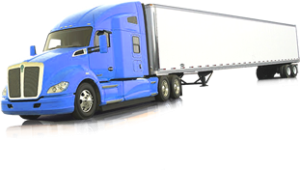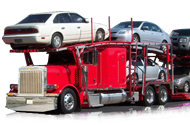Introduction To Terminal-To-Terminal Vehicle Transport
How Terminal-To-Terminal Transport Works
Terminal-to-terminal vehicle transport is a streamlined process designed to simplify the logistics of moving a vehicle from one location to another. It involves transporting your vehicle between designated terminals, which are essentially storage facilities or depots located in major cities or transportation hubs. This method differs from door-to-door services, as the customer is responsible for delivering and picking up their vehicle at these specific terminals.
The process begins with selecting a reputable transport company that offers terminal-to-terminal services. Once you have chosen your provider, you’ll be assigned a terminal where you will need to drop off your vehicle. These terminals are strategically placed to cover wide geographic areas, making them accessible even if they require some travel on your part.
Upon arrival at the drop-off terminal, you’ll complete necessary paperwork and possibly undergo an inspection to document the car’s condition before transport. The vehicle is then securely stored until it can be loaded onto a carrier. Transport companies often consolidate multiple vehicles for efficiency, optimizing routes and reducing costs.
During transit, your car will make its way through various checkpoints until it reaches the destination terminal. Throughout this journey, tracking options may be available so you can monitor progress in real-time. Upon arrival at the destination terminal, you’ll receive notification that your vehicle is ready for pick-up.
Finally, you’ll visit the destination terminal to retrieve your car. After another round of paperwork and possibly another condition check to ensure no damages occurred during transit, you’re free to drive away.
This method offers flexibility and cost savings compared to door-to-door service but requires additional effort on the customer’s part in delivering and collecting their vehicle from specified locations.
Benefits Of Terminal-To-Terminal Vehicle Transport
Terminal-to-terminal vehicle transport offers several distinct advantages that make it an appealing option for many people looking to move their vehicles over long distances. One of the primary benefits is cost efficiency. Because terminals serve as centralized drop-off and pick-up points, transportation companies can more easily consolidate loads and optimize routes. This reduces operational costs, which are often passed down to the customer in the form of lower shipping rates.
Another significant advantage is flexibility in scheduling. Terminals typically operate on a fixed schedule, allowing customers to choose drop-off and pick-up times that align with their personal plans. This can be particularly beneficial for individuals who may not be available for a door-to-door service, which requires someone to be present at both locations during specific time windows. Security is also enhanced when using terminal-to-terminal transport services.
Terminals are often equipped with advanced surveillance systems and security measures designed to protect vehicles from theft or damage while they are stored on-site. This added layer of security can provide peace of mind for owners who might otherwise worry about the safety of their vehicles during transit. Furthermore, terminal-to-terminal transport can offer greater convenience for those living in remote or hard-to-reach areas where door-to-door service might not be feasible or would incur additional costs.
By utilizing nearby terminals, customers can avoid these extra charges while still benefiting from professional transportation services. Finally, terminal storage facilities generally have provisions for handling various types of vehicles, including motorcycles, boats, and RVs, making them versatile hubs capable of accommodating diverse transportation needs. This versatility ensures that no matter what type of vehicle you need to move, there’s likely a terminal solution suited to your requirements.
Drawbacks Of Terminal-To-Terminal Vehicle Transport
While terminal-to-terminal vehicle transport offers various benefits such as cost-effectiveness and flexibility, it is not without its drawbacks. One of the most significant disadvantages is the inconvenience associated with dropping off and picking up the vehicle from designated terminals. These terminals may be located far from residential areas, necessitating additional travel time and expenses for both drop-off and retrieval of the vehicle.
Moreover, terminal-to-terminal transport often involves a waiting period before the vehicle can be picked up or delivered. This delay occurs because vehicles are usually shipped in batches to optimize space and cost-efficiency. For individuals who need their vehicles urgently or within a specific timeframe, these delays can be problematic.
Another drawback is the potential for increased risk of damage or theft while the vehicle is stored at the terminal. Unlike door-to-door services where vehicles remain in transit under supervision until they reach their destination, terminal storage means that cars may sit unattended for extended periods. This situation heightens exposure to environmental elements and security risks.
Additionally, navigating through large terminals can be cumbersome for individuals unfamiliar with these facilities. The process of finding your vehicle among hundreds or even thousands of others can be time-consuming and frustrating. Furthermore, some terminals might have limited operating hours, reducing flexibility for customers who have tight schedules.
Lastly, although generally cheaper than door-to-door service, terminal-to-terminal transport may incur hidden costs such as storage fees if a vehicle remains at the terminal beyond a specified period. These additional charges can erode any upfront savings gained by choosing this mode of transport over more direct alternatives.
In summary, while terminal-to-terminal vehicle transport offers economic advantages and operational efficiency for service providers, it also presents several logistical challenges that customers must carefully consider when opting for this method.
Comparing Terminal-To-Terminal And Door-To-Door Transport
When considering vehicle transport options, it’s essential to understand the differences between terminal-to-terminal and door-to-door services. These two methods offer distinct advantages and cater to various customer needs.
Terminal-to-terminal transport involves dropping off and picking up your vehicle at designated locations, often found in major cities or transportation hubs. This method can be more cost-effective due to the reduced logistical complexities for the transport company. By consolidating multiple vehicles at central terminals, companies can optimize their routes and minimize fuel consumption, leading to lower prices for customers. Additionally, terminals typically have secure facilities where vehicles are stored until pickup, providing peace of mind regarding safety.
On the other hand, door-to-door transport offers a higher level of convenience by picking up your vehicle from your specified location and delivering it directly to your destination address. This service eliminates the need for you to travel to and from terminals, which can be particularly beneficial if you live far from these locations or have a busy schedule. Door-to-door transport is especially advantageous in rural areas where terminal access might be limited or non-existent.
However, this convenience comes at a premium. Door-to-door services generally cost more due to the additional labor and fuel required for individualized pickups and drop-offs. Moreover, urban environments with narrow streets or restricted access may pose challenges for large transport trucks, potentially necessitating an alternative nearby delivery point.
Ultimately, choosing between terminal-to-terminal and door-to-door vehicle transport depends on your priorities—whether you value cost savings or convenience more highly—and your specific circumstances such as location accessibility and time availability. Both options provide reliable solutions tailored to different logistical needs.
Costs Involved In Terminal-To-Terminal Transport
When considering terminal-to-terminal vehicle transport, understanding the costs involved is crucial for making an informed decision. The expenses associated with this service are influenced by multiple factors, each contributing to the overall price.
Firstly, the distance between the origin and destination terminals significantly impacts cost. Longer distances naturally incur higher fuel and labor costs, which are reflected in the final price. Additionally, geographical challenges such as mountainous terrain or remote areas can further escalate expenses due to increased fuel consumption and wear on transport vehicles.
Secondly, the type of vehicle being transported also plays a role in determining costs. Larger or heavier vehicles like SUVs and trucks typically require more space and may necessitate specialized equipment for loading and unloading. This additional complexity often results in higher fees compared to smaller cars.
Moreover, seasonal demand fluctuations can affect pricing. During peak moving seasons such as summer months or around major holidays, increased demand for transport services can lead to higher rates due to limited availability of carriers.
Insurance coverage is another critical component of cost considerations. While most terminal-to-terminal transport services include basic insurance coverage as part of their package, customers may opt for additional coverage for greater peace of mind. Enhanced insurance plans come at an extra cost but provide broader protection against potential damages during transit.
Lastly, terminal fees themselves contribute to overall expenses. Terminals charge fees for storage and handling of vehicles before pick-up or after drop-off. These charges vary depending on the location and duration of storage required.
In summary, terminal-to-terminal vehicle transport costs are shaped by factors such as distance, vehicle type, seasonal demand fluctuations, insurance choices, and terminal fees. Understanding these elements helps customers budget effectively while ensuring their vehicle’s safe transit from one terminal to another.
How To Prepare Your Vehicle For Terminal-To-Terminal Shipping
When preparing your vehicle for terminal-to-terminal shipping, a method where cars are transported between designated drop-off and pick-up points, several key steps can help ensure a smooth process. Begin by thoroughly cleaning your vehicle inside and out. This allows you to conduct a detailed inspection for any pre-existing damage. Document any scratches, dents, or other imperfections with photographs; these images will serve as crucial evidence should any disputes arise regarding the condition of your car upon delivery.
Next, remove all personal belongings from your car. Terminal-to-terminal shipping services typically do not cover personal items under their insurance policies, and loose objects can cause damage during transit. Ensure that the gas tank is no more than one-quarter full; this reduces the weight of the vehicle and mitigates potential hazards.
Disable any toll tags or parking passes that could incur charges while in transit. It’s also wise to deactivate the alarm system to prevent it from accidentally triggering during transport. If your vehicle has any special requirements—such as being particularly low to the ground or having custom modifications—inform the transport company in advance so they can make necessary accommodations.
Mechanically, ensure that your car is in good working order before shipping. Check fluid levels and tire pressure, and address any leaks or mechanical issues that could complicate loading or unloading processes.
Finally, familiarize yourself with both terminals’ operating hours and procedures to avoid unnecessary delays on either end of the journey. Proper preparation not only facilitates a smoother transport experience but also provides peace of mind knowing that you’ve taken all necessary precautions to protect your valuable asset.
Tips For Choosing A Reliable Terminal-To-Terminal Transport Service
When selecting a terminal-to-terminal vehicle transport service, it’s essential to conduct thorough research and consider various factors to ensure your vehicle’s safe and timely delivery. Start by examining the company’s reputation. Look for reviews and testimonials from previous customers to gauge their experiences. A reliable transport service will have a solid track record of positive feedback, highlighting their commitment to customer satisfaction.
Next, evaluate the pricing structure. While affordability is important, extremely low prices can be a red flag for subpar services or hidden fees. Request detailed quotes from multiple companies and compare them, ensuring you understand what each price includes. Look for transparency in pricing and avoid companies that are reluctant to provide clear information.
Insurance coverage is another crucial aspect. Confirm that the transport service offers comprehensive insurance for your vehicle during transit. This coverage should protect against potential damage or loss, providing peace of mind throughout the transportation process.
Additionally, assess the company’s communication channels and customer service quality. Reliable services will maintain open lines of communication, keeping you informed about your vehicle’s status from drop-off at the terminal to its arrival at the destination terminal. Prompt responses to inquiries reflect a company’s dedication to professional service.
Finally, consider the convenience of terminal locations offered by the transport service. Terminals should be easily accessible and located within reasonable proximity to both your starting point and final destination.
By taking these factors into account—reputation, pricing transparency, insurance coverage, communication quality, and terminal convenience—you can select a trustworthy terminal-to-terminal vehicle transport service that meets your needs effectively while ensuring your vehicle’s safety throughout its journey.



